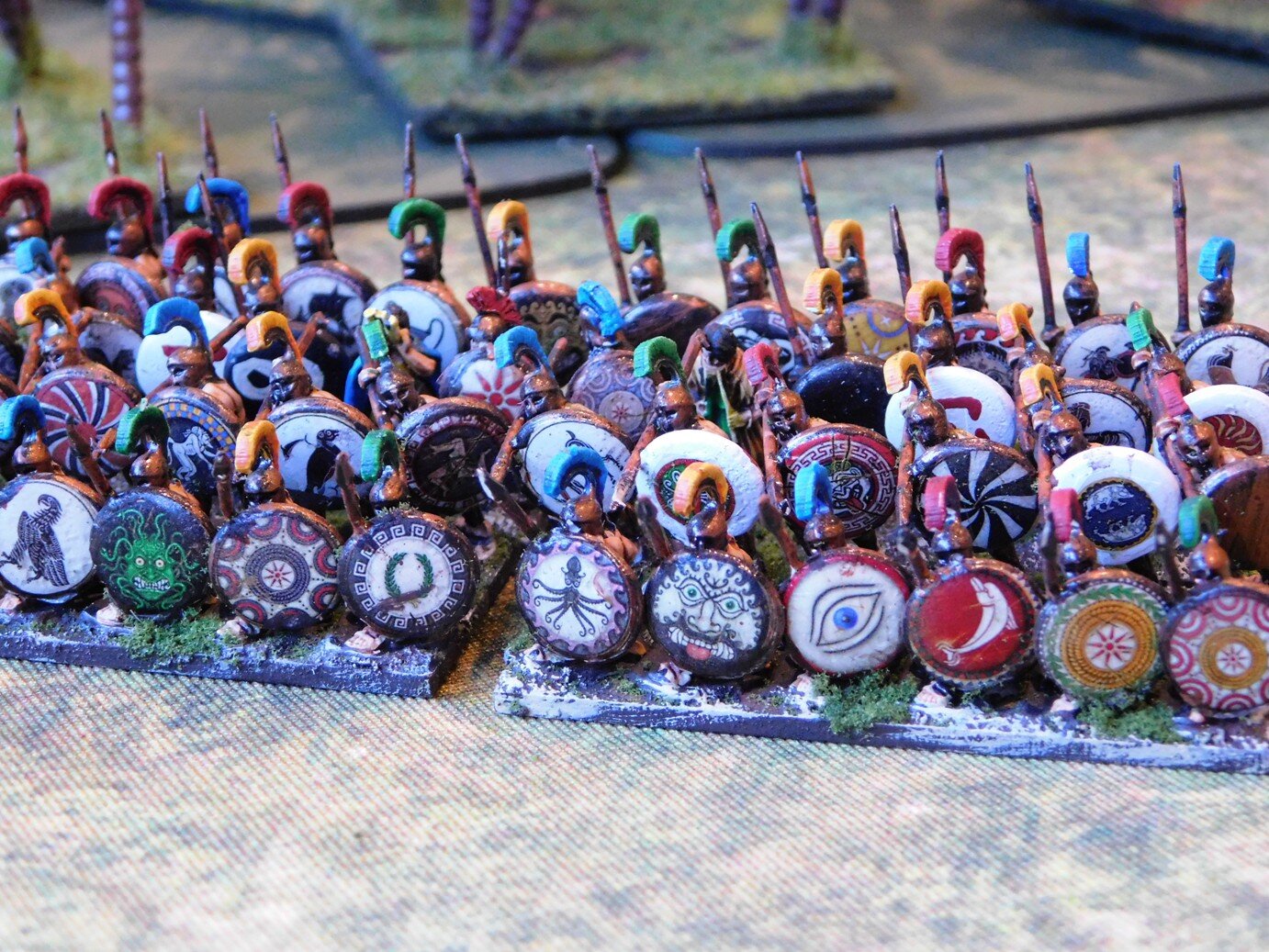Enter the Heavy Chariots!
/No gaming at the moment as COVID restrictions are still in force, so it’s on with the painting: specifically adding units to my 15mm Classical Indian army.
The last week or so has been spent putting together and painting a couple of heavy chariot units:
These are figures from Museum Miniatures’ CAD designed “Z” range painted using mostly GW Contrast paints.
Just in case you’re after a bit of inspiration, here are a couple of notes:
The dark brown horses are painted using Cygor Brown diluted 50/50 with the Contrast thinner, then black manes, tails and lower legs.
The dun horses use Agresso Dunes as the skin colour, with black manes, tails and lower legs.
The grey coloured horses (a shade probably unknown to nature but looks good on a model!) are Space Marines grey with Basilicum grey manes, tails and lower legs.
The black horses are Templar Black Contrast for the skin, then a standard acrylic black for the mane and tail.
The crew skintone comes from a 50/50 mix of Cygor Brown and Fyreslayer Flesh
The chariot sides were painted Skeleton Horde, the black blobs in an approximate cow hide pattern, dark grey infill on the blobs, then stippled white in between.
The bases are Warbases large vehicle bases with GW basing material on top with a sprinkling of talus before it dried. That was then drybrushed in a bone colour and the edge painted as well. Then three types of shrubbery brush in clumps placed randomly. Then a sprinkle of mixed dark green and dark yellow basing fluff.
The whole lot then varnished in a matt anti-shine finish.
The bright coloured shields are a bit fantastic (simple alternating stripes) but provide a nice contrast to the other colours
I decided to paint the chariot wheels and structure in the darker Contrast red for the same reason.
Finally, I didn’t touch up the figures after basing, especially the horses and lower parts of the chariots, as I felt that the models looked better with a bit of dirt and dust on the undercarriage!
Next up are the escorted elephants. That’s quite a big project, with each (deep) base containing two elephants-and-crew and eight escorts on foot. Three bases worth to do, so might take me a bit of time! Wish me luck…
















